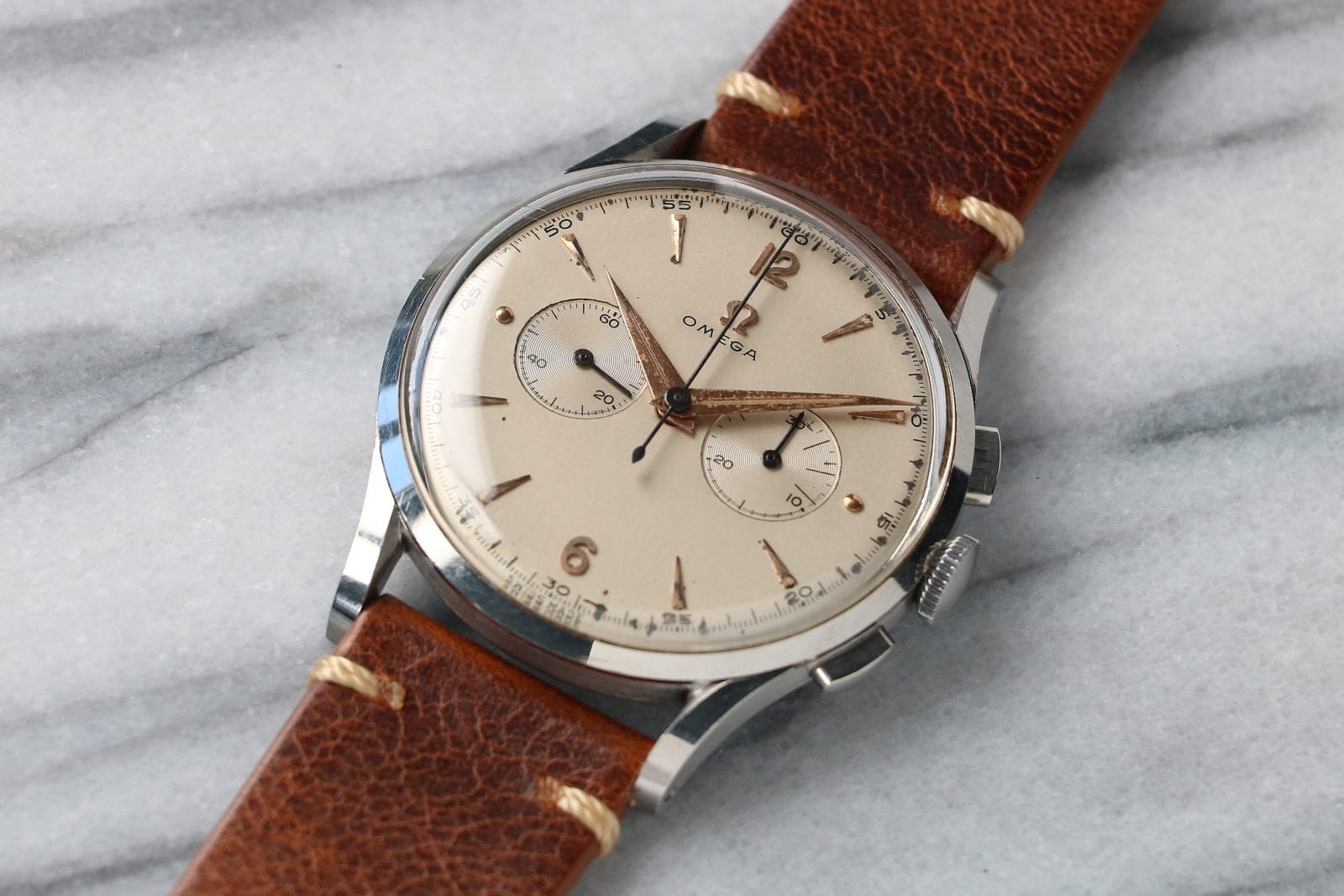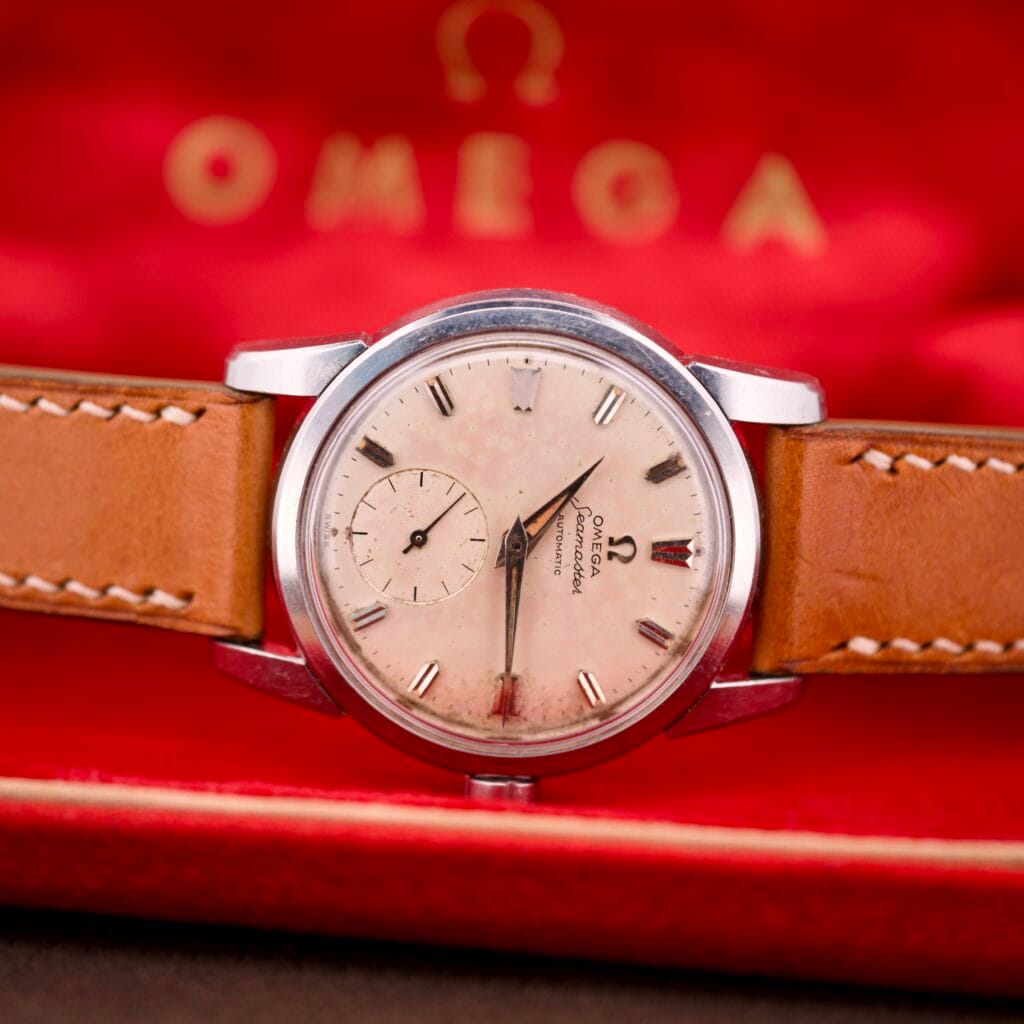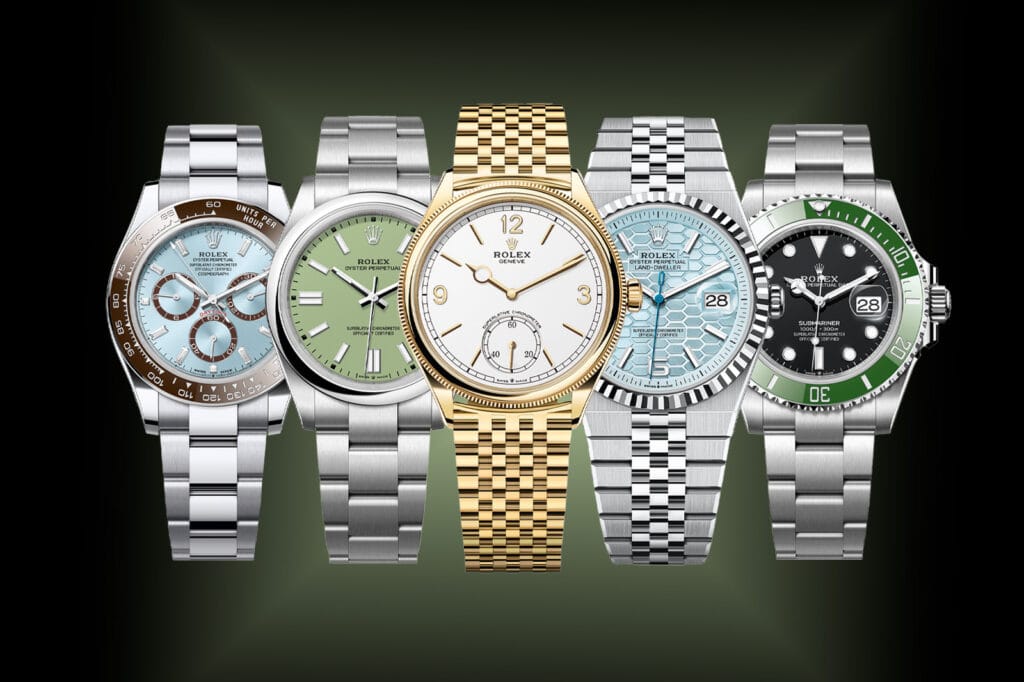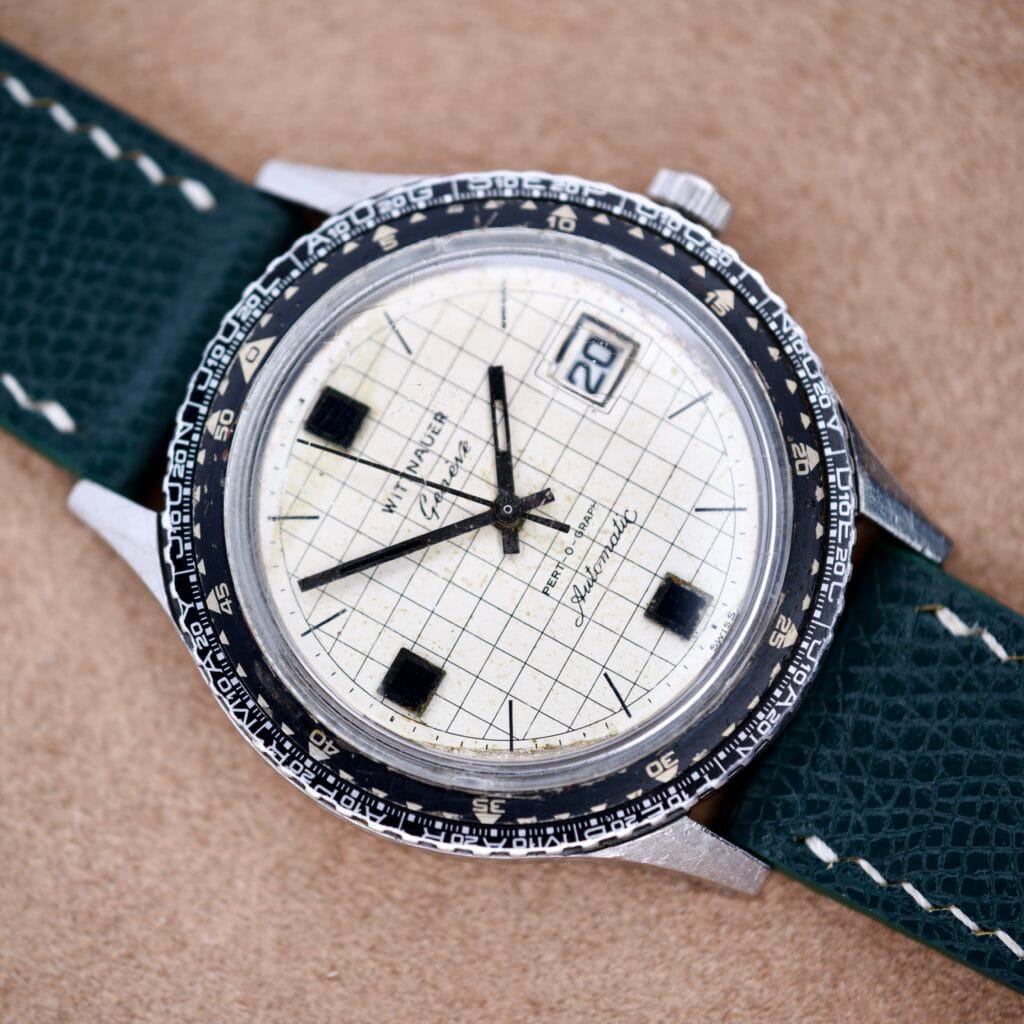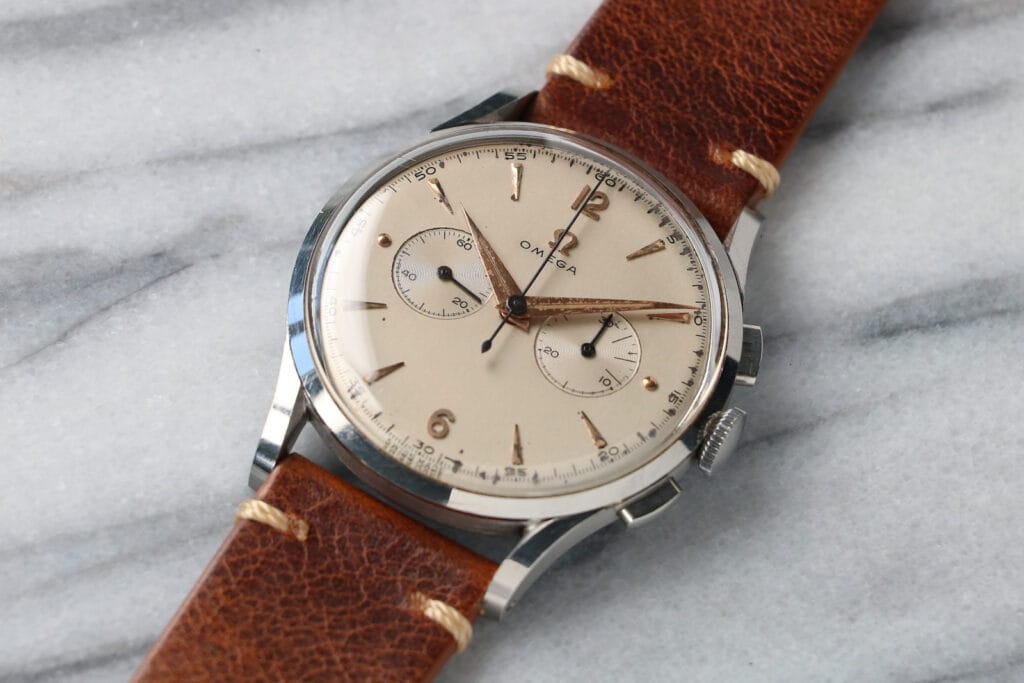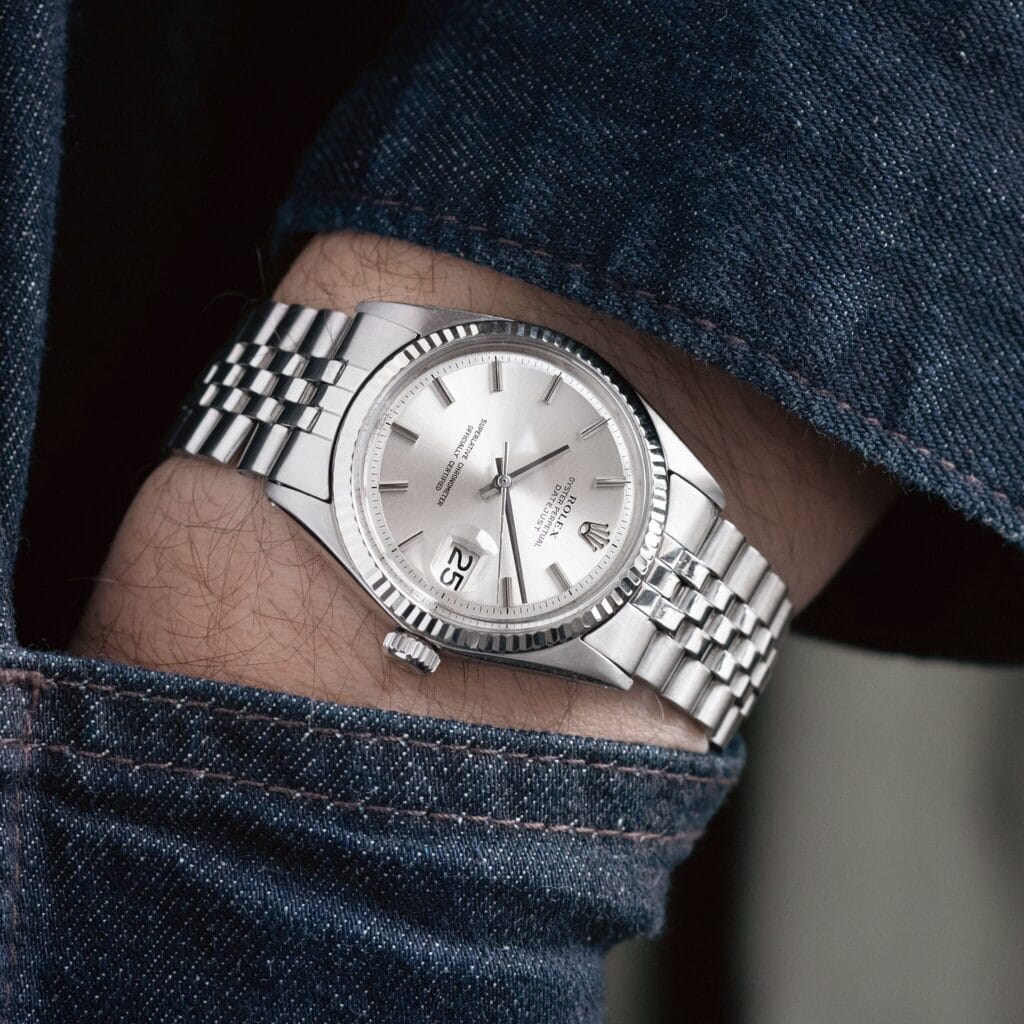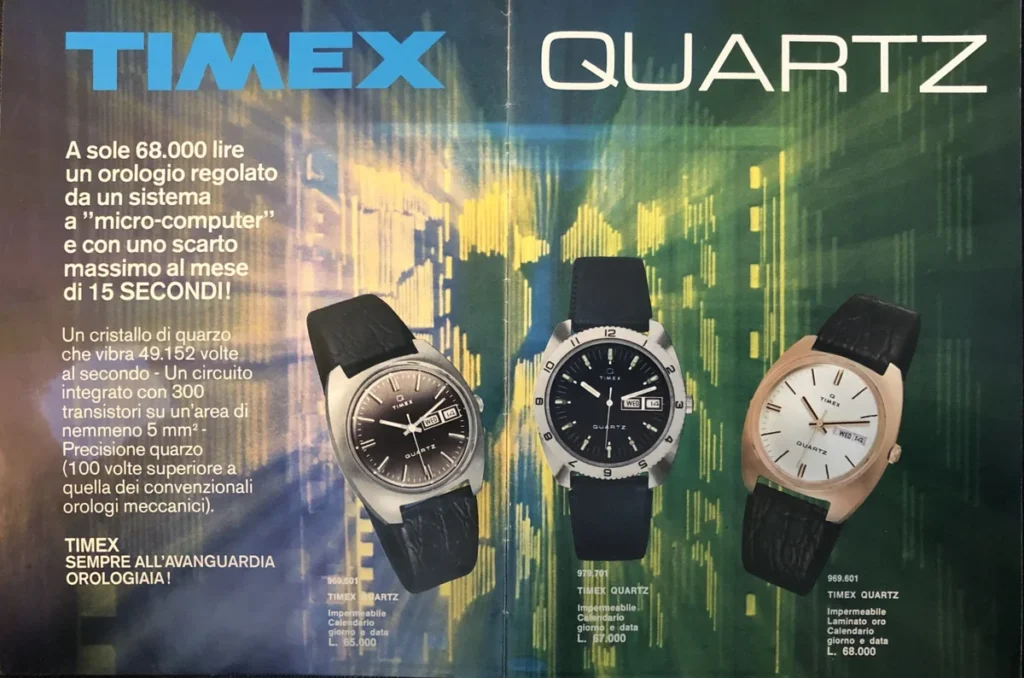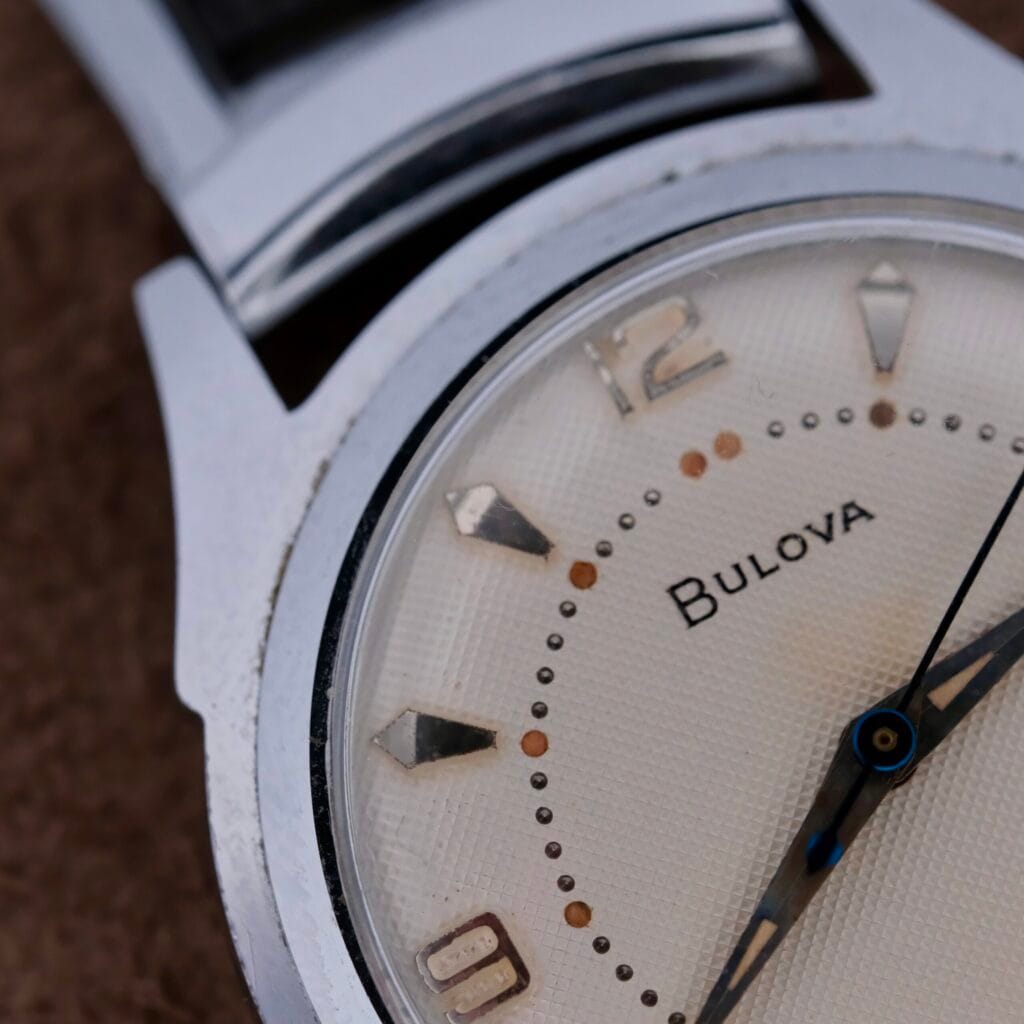Don't miss the next drop
eBay, to the aspiring watch collector, is a landscape of profound contradiction. It is a digital bazaar of immense scale, a place where, hidden amongst a sea of listings, one might uncover a rare, forgotten timepiece, or a horological treasure waiting for a discerning eye. Yet, for every hidden gem, there are countless pitfalls. Veteran collectors have long referred to the platform as “ePrey,” a treacherous and byzantine maze where fakes, cobbled-together “Frankenwatches,” and misrepresented junk lie in wait for the unwary. The allure of finding a deal is powerful, but it is a reward reserved exclusively for the prepared. The belief that one can simply stumble upon a valuable vintage watch on eBay through luck alone is a dangerous fantasy. Success in this arena is not born from frantic bidding in the final seconds of an auction; it is forged through a foundation of deep knowledge, meticulous research, and unwavering patience. It requires a systematic process, a strategic framework that transforms a hopeful buyer into a confident hunter.
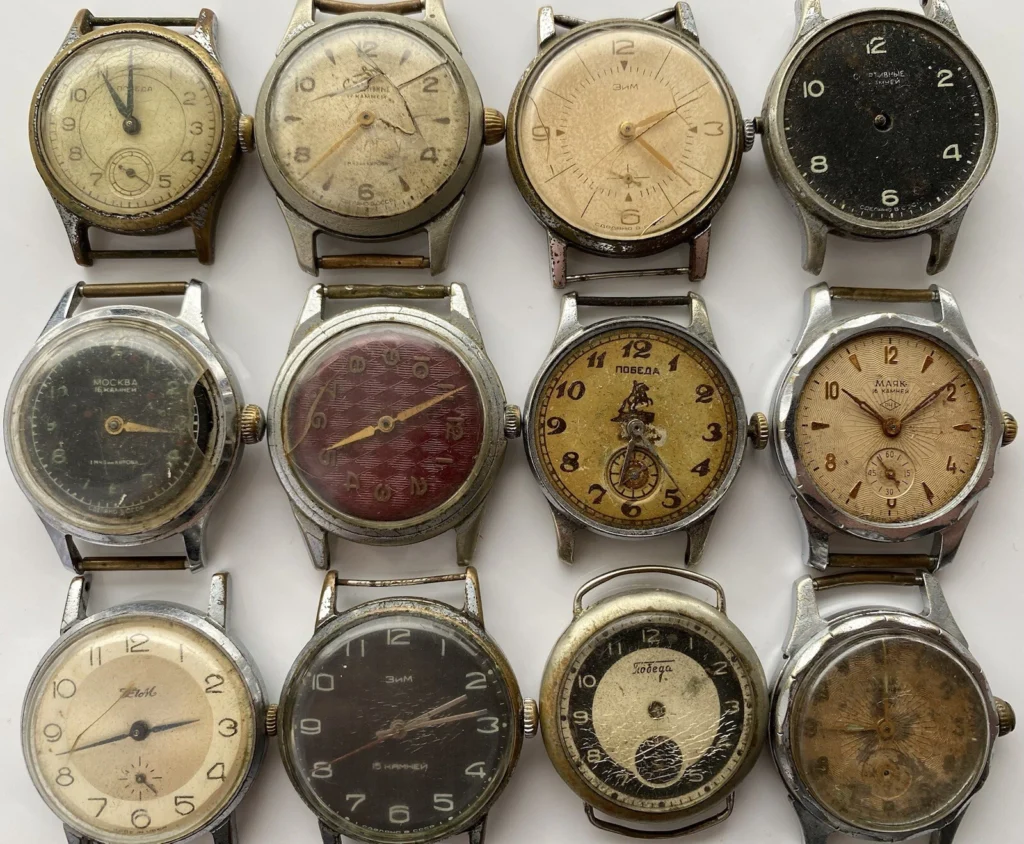
The Foundation of a Smart Purchase: Pre-emptive Research
The most critical phase of buying a vintage watch on ebay occurs long before a single bid is placed. The outcome of a purchase is determined not by the click of a button, but by the hours of focused research invested beforehand. This preparatory work builds the intellectual armor necessary to navigate the marketplace safely. It is a non-negotiable first step that separates the successful collector from the future victim of a scam.
The journey begins not with a broad, hopeful search for “vintage watch,” but with a narrow, focused objective. Searching for a generic category is the fastest path to an impulse purchase based on fleeting aesthetics—a decision that often leads to acquiring a problematic or inauthentic piece. The key to mitigating this risk is specificity. Instead of browsing aimlessly, the prospective buyer should identify a particular brand, style, or era that resonates with them—perhaps 1960s dive watches, 1970s automatic chronographs, or the clean designs of the Bauhaus movement.
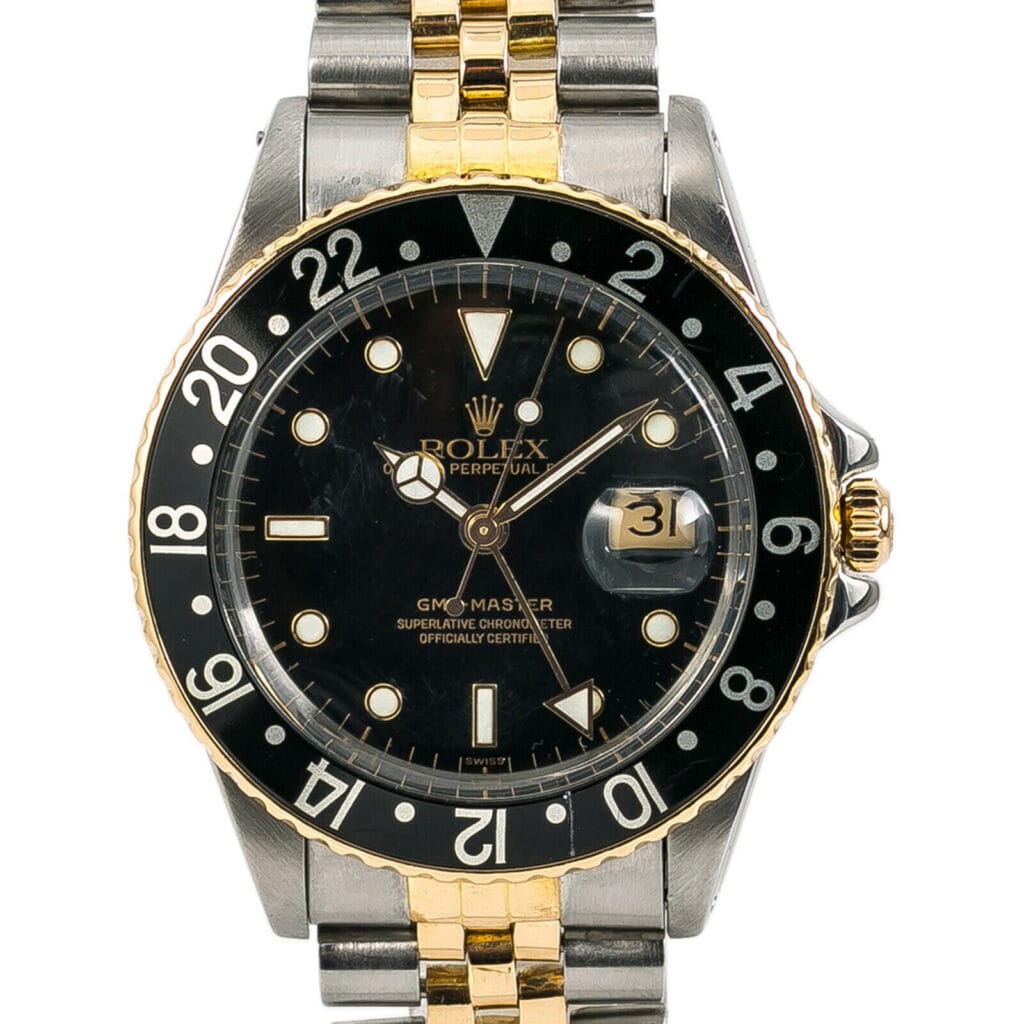
From there, the focus must narrow further to one or two specific reference numbers. For example, a search should not be for “vintage Omega,” but for “Omega Seamaster reference 166.010” or “Seiko 6139-6002 Pogue“. This deliberate narrowing of the field allows the buyer to become a temporary, yet deeply knowledgeable, expert on a single model. All subsequent research becomes more effective, and the ability to spot inconsistencies grows exponentially.
Once a target reference is chosen, the next step is to build a comprehensive visual and informational database of what a 100% correct, factory-original example looks like. This process is the cornerstone of authentication; one cannot spot an incorrect detail without first knowing what is correct. This involves an exhaustive search for validated examples across multiple trusted platforms:
- Dedicated Watch Forums: Communities like WatchUSeek, Omega Forums, and various Rolex Forums are invaluable resources. They are populated by passionate, knowledgeable collectors who often post detailed photographs and discussions about their watches. These forums are a primary source for viewing trusted, real-world examples.
- Reputable Dealer Archives: The “sold” sections of well-known vintage watch dealers (such as the Ottuhr Shop, Analog/Shift, or Menta Watches) are curated archives of authenticated watches. These provide high-quality reference photos of correct examples.
- Auction House Catalogs: The online archives of major auction houses like Christie’s, Phillips, and Sotheby’s contain professionally vetted and photographed examples of high-value timepieces.
- Image Aggregators: Google Images and specialized tools like WatchRecon can be used to gather a large volume of images quickly. However, these images must always be cross-referenced against the trusted sources above to verify their accuracy.
The goal of this research is not merely to collect images, but to internalize the subtle design language of the target watch from its specific era. A novice collector sees individual parts; an expert sees a coherent whole. By studying dozens of correct examples, the brain begins to absorb the nuances: the exact serifs on a font, the precise angle of a lug chamfer, the specific type of finishing on a movement from that decade. This process cultivates an intuitive “gut feeling” that becomes a powerful defense mechanism. When a listing with an anomaly appears—a font that looks too modern, a case that feels too soft—it will trigger an immediate sense of unease, even before the specific flaw can be articulated. This intuitive recognition, built on a foundation of diligent research, is the single greatest safeguard against even the most sophisticated fakes.
Know Thy Enemy: Researching Common Fakes and Regional Variants
After establishing a baseline for what is correct, the collector must then actively research what is incorrect. For any target model, especially popular ones, it is essential to search for terms like “[Your Watch] fake,” “[Your Watch] redial,” or “[Your Watch] Frankenwatch”. This proactive defense reveals the common tells and modifications to watch out for.
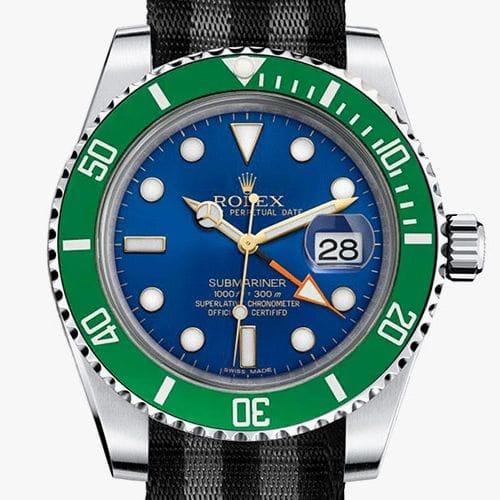
Furthermore, it is critical to be aware of regional hotspots that have become notorious for producing fakes and heavily modified watches. Listings originating from India, for example, are well-known for “Mumbai Specials”, vintage watches from brands like Seiko, Citizen, and Oris that have been fitted with garish, brightly colored redials and cobbled together from various parts bins. Similarly, a flood of suspiciously pristine “refurbished” vintage Omegas has been documented coming from South Korea. Other areas like Pakistan and parts of Eastern Europe also warrant increased caution. This awareness is a crucial element of risk management.

With a solid foundation of research, the collector is prepared to approach an eBay listing not as a simple advertisement, but as a piece of evidence to be forensically examined. Every photograph, every word of the description, and every interaction with the seller provides clues about the watch’s true nature and the seller’s trustworthiness.
Photographs are the primary evidence in an online watch purchase, and they must be scrutinized with extreme care. This analysis should be done on a large desktop monitor, not a small phone screen, as crucial details can be missed otherwise.
- Demand High-Resolution Detail: The listing must include clear, high-pixel photos that allow the buyer to zoom in on the dial printing, the edges of the hands, the case finishing, and other minute details. Blurry photos or images taken from a distance are major red flags and often a deliberate attempt to obscure flaws.
- Insist on Multiple Angles: A trustworthy seller will provide a comprehensive set of images, including straight-on shots of the dial, the case back, both sides of the case (to show the crown and profile), and close-ups of the buckle or clasp. A listing that conveniently ignores the case back or one side of the case should be treated with suspicion.
- Be Wary of Deceptive Lighting: Overly bright, “glamour” lighting can wash out details and hide scratches, dial stains, or other imperfections. Photos taken in soft, natural light are often more honest and revealing.
- Never Hesitate to Request More Photos: If the provided images are insufficient, the buyer must contact the seller and request specific additional shots (e.g., “Could you please provide a clear, straight-on photo of the dial without any reflections?” or “a close-up of the engravings between the lugs?”). A seller’s refusal to provide more photos is an unambiguous deal-breaker. It signals either laziness or, more likely, that they have something to hide.
Decoding the Description: Separating Fact from Fiction
The item description is a minefield of potential misdirection. A savvy buyer must read it with a critical eye, paying as much attention to what is not said as what is.
- The “Sea of Words” Trap: Be extremely cautious of listings with long, flowery, and poetic descriptions. Sellers sometimes use an excess of words to bury critical flaws deep within the text, hoping a buyer will skim over phrases like “repainted dial,” “aftermarket crown,” or the damningly vague “doesn’t run”. Every single word must be read carefully.
- The Danger of Vague Terminology: Phrases like “working” or “running” are functionally meaningless in the context of vintage watches. A watch can “run” for only a few minutes after being shaken or keep time so poorly that it is unusable. If the seller does not provide specific timekeeping information, one must ask directly: “How many seconds does the watch gain or lose over a 24-hour period?” and “What is the approximate power reserve on a full wind?”
- Identify Critical Omissions: A description that makes no mention of the watch’s service history or the originality of its parts is a significant red flag. In the world of vintage watches, if a positive attribute (like an original bracelet or a recent service) is not mentioned, it should be assumed to be absent.
- Scrutinize the Fine Print: Always read the entire listing, including any seller-specific policies at the bottom. Look for hidden details like exorbitant “restocking fees” for returns or unusual payment requirements.
There is one golden rule from which there can be no deviation: if a listing for a vintage mechanical watch does not include a clear, well-lit photograph of the movement, do not buy the watch unless you have the tools to open the watch. The movement is the heart of the timepiece, and its condition is a primary indicator of the watch’s overall health and history.
When examining the movement photo, look for:
- Corrosion and Water Damage: Any signs of rust, pitting, or green or blue discoloration on the movement plates, bridges, or screws are evidence of moisture intrusion. This often indicates a need for a costly, if not impossible, repair and is a reason to immediately pass on the watch.
- Correct Caliber and Markings: Cross-reference the caliber number engraved on the movement with the research conducted in the first phase. Is this the correct movement for this specific watch reference? Are the manufacturer’s engravings crisp and correct for the era?.
- Amateur “Butchery”: Look for heavy, concentric scratches around screw heads. This is a tell-tale sign of a slipped screwdriver and indicates that the watch has been worked on by an amateur, which can spell trouble for its mechanical integrity.
Ultimately, the listing itself is a direct reflection of the seller’s professionalism and confidence in their product. A knowledgeable and honest seller will provide excellent photos, a detailed and transparent description, and will welcome questions because they have nothing to hide. Conversely, a seller who is either ignorant of their product or actively trying to deceive will rely on blurry photos, vague descriptions, and evasive communication. Therefore, the quality of the listing should be considered as important an indicator as the condition of the watch itself. A low-effort, poorly presented listing almost always corresponds to a high-risk, poor-quality watch.
Assessing Originality and Authenticity
This stage moves from evaluating the listing to applying specialized knowledge to the watch itself. This is the technical core of the process, where deep research pays its greatest dividends. Here, the collector must scrutinize the dial, case, and configuration to identify the subtle and overt signs of inauthenticity and undesirable alterations that plague the vintage market.
A “redial” is a watch dial that has been refinished or repainted by a third party, not the original manufacturer. For a serious collector, a redial is one of the most significant value-killers, as it erases the original factory finish and character of the watch. Spotting them requires a keen eye for detail.
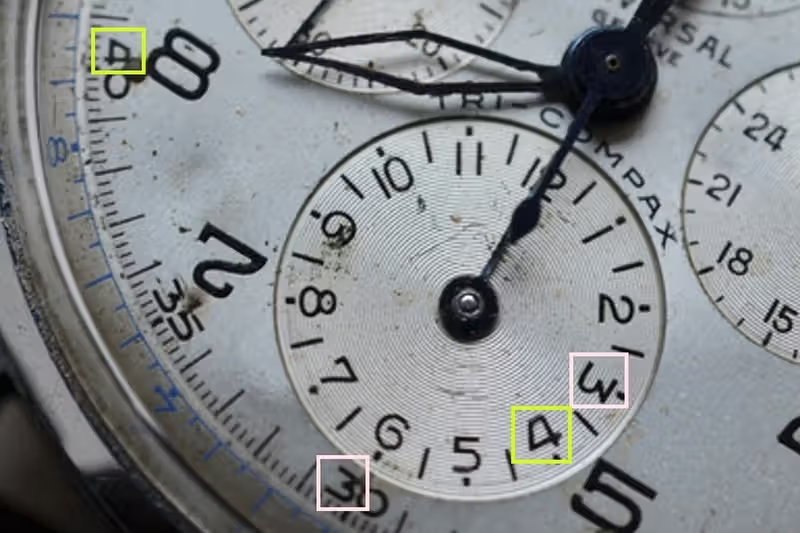
- Printing Quality and Consistency: Original dials were printed in a factory using precise machinery, resulting in sharp, crisp text and markers. Redials are often done by hand and are prone to human error. Look for fuzzy or bleeding edges on the lettering, inconsistent font thickness, or smudges, particularly where different lines of text or tracks overlap.
- Font Style and Accuracy: Every brand used specific fonts during specific eras. Compare the font on the dial—for the brand name, model name, and any other text—to your database of known original examples. Are the serifs correct? Are the “6” and “9” numerals “open” or “closed” as they should be for that model and year? Inconsistencies are a dead giveaway.
- Minute Track Alignment: An off-center minute track is a classic sign of a poor redial. Carefully check the distance from the outer edge of the minute track to the physical edge of the dial at the 12, 3, 6, and 9 o’clock positions. This spacing should be perfectly even all the way around.
- Paint on Applied Markers: On dials with separate, applied hour markers, a sloppy redialer will paint the dial without first removing the markers. This results in paint visibly “creeping up” the sides of the markers, making them look as if they are sinking into the dial.
- Luminous Material (Lume): Examine the lume on the hands and hour markers. Is the color and texture consistent between the hands and the dial? Does it look too new or too green for a decades-old watch? The luminous material used in most vintage watches, tritium (used from the early 1960s to the late 1990s), has a half-life of about 12 years and should no longer glow brightly in the dark. A brightly glowing vintage watch has almost certainly been relumed, a restoration that must be disclosed.
- The “Swiss Made” Signature: Pay close attention to the small text at the bottom of the dial (e.g., “SWISS” or “SWISS MADE”). On many redials, this text is missing entirely, is rendered in the wrong font, or is poorly printed and difficult to read.
- The “Pristine Dial” Paradox: One of the most common red flags is a watch where the case, crystal, and hands show clear signs of age and wear, but the dial looks perfectly new. The dial is one of the components most susceptible to aging from sunlight and humidity. A flawless dial on an otherwise worn watch is highly suspicious and very often a redial.
Box and Papers
The presence of the original box and papers is often seen as the holy grail for a vintage watch. While a complete set is certainly a nice bonus, it should be approached with caution and nuance. First, one cannot wear the box and papers; a pristine, all-original watch without its paperwork is infinitely more valuable than a mediocre, over-polished example that happens to have them.
Second, and more critically, papers can be faked. There are documented cases of sophisticated operations using vintage typewriters and aged paper to create fraudulent Rolex warranty papers to pair with watches, dramatically increasing their asking price. A seller who seems to have an unusually large inventory of “full set” vintage watches should be viewed with extreme skepticism. Finally, there is the polishing paradox: the type of meticulous original owner who would save the box and papers for decades was often the same type of owner who would send the watch for regular servicing, which historically included routine case polishing. Consequently, many watches with original papers are, ironically, the most heavily polished examples on the market.
| Area of Inspection | Red Flags to Watch For |
| Listing Photos | Blurry, low-resolution images. Not enough angles (front, back, sides, movement). Seller refuses to provide more photos when asked. |
| Listing Description | Vague terms like “running” or “working” without specifics. Overly poetic text that buries flaws. Key information (service history, originality) is omitted. |
| Dial | Fuzzy, uneven, or smudged printing. Inconsistent or incorrect fonts for the era. Misaligned minute track. Paint creeping up the sides of applied markers. Lume is too new, too bright, or inconsistent. “SWISS MADE” is missing or poorly printed. Dial looks brand new while the rest of the watch is aged. |
| Case | Soft, rounded, or blurry lug edges and lines indicating over-polishing. Mismatched case back reference number. |
| Movement | No movement photo provided in the listing. Signs of rust, oxidation, or water damage. Heavy scratches around screws from amateur servicing. Incorrect caliber for the watch reference. |
| Seller | Seller located in a known hotspot for fakes/redials (e.g., India, South Korea). Multiple negative feedbacks for similar items or misrepresentation. Sells a random assortment of goods rather than specializing in watches. Evasive or unwilling to answer specific questions. |
“Buying the Seller”
In the anonymous world of online marketplaces, the adage “buy the seller, not the watch” is more than just a catchy phrase; it is a fundamental principle of risk management. A beautiful watch from a questionable seller is a bad purchase waiting to happen. Vetting the individual on the other end of the transaction is as critical as authenticating the timepiece itself.
A Deep Dive into Seller Reputation
A high positive feedback percentage is a necessary but insufficient condition for trust. A score of 99.5% or higher is a good starting point, but the analysis must go deeper.
- Analyze the Content of Feedback: Do not just look at the number. Click through and read the actual comments left by previous buyers, especially any neutral or negative ones. Is there a pattern? A single disgruntled buyer might be an anomaly, but multiple complaints about items not being as described, selling fakes, or poor communication is a clear warning sign. It is also worth noting that feedback is often left for only a fraction of total sales, so the available data is just a small window into the seller’s history.
- Examine Sales History for Specialization: A crucial step is to investigate what else the seller is selling or has recently sold. Do they specialize in vintage watches? This suggests a level of knowledge and passion for the subject. Or is their inventory a random collection of clothing, electronics, and household goods? A generalist seller is far more likely to be ignorant of a watch’s condition and originality, or to have acquired it without knowing its history. A dedicated watch seller is almost always a safer bet.
- Beware of Shill Bidding: This deceptive practice involves a seller using secondary, often new, accounts to place bids on their own auctions to artificially inflate the price. To spot this, examine the bidding history of an item. If you see a pattern of bids from accounts with zero or very low feedback that consistently drive up the price but never win, it could be a sign of shill bidding. Another red flag is seeing the same item being sold and relisted multiple times, which can happen when a shill bid wins and the “buyer” then backs out.
Location, Location, Location: Navigating International Sellers
A seller’s geographic location is a significant factor in risk assessment. Many experienced collectors advise newcomers to stick to sellers based in their own region, such as North America for US-based buyers, at least initially. This strategy helps to minimize potential complications arising from language barriers, high shipping costs, customs duties, and the logistical nightmare of an international return.
As established previously, certain regions have developed reputations as hubs for the production of fakes, redials, and “Frankenwatches.” Therefore, listings from sellers in India, Pakistan, South Korea, and some countries in Eastern Europe and South America should be approached with a heightened level of scrutiny. This is not a blanket prohibition but a prudent, data-driven approach to managing risk.
The Litmus Test: Asking the Right Questions
Engaging with the seller directly serves a dual purpose: it allows the buyer to obtain critical information that may be missing from the listing, and it acts as a powerful test of the seller’s knowledge, transparency, and honesty. The nature of the response is often more telling than the content of the answer itself. A prompt, clear, and confident reply inspires trust. An evasive, vague, or ignored message is a clear signal to walk away.
| Category | Essential Questions to Ask the Seller |
| Condition & Originality | Are all parts of the watch—specifically the dial, hands, crown, and crystal—original to this timepiece?. If anything has been replaced, what was it, and were genuine manufacturer parts or aftermarket parts used?. Has the case ever been polished?. Are there any scratches, marks, or areas of discoloration on the dial that are not clearly visible in the photos?. |
| Performance & Service | When was the watch last serviced, and can you provide a receipt or documentation for the service?. How is the watch currently running? Specifically, how many seconds does it gain or lose over a 24-hour period?. What is the power reserve when the watch is fully wound?. Do all functions (e.g., date change, chronograph) work correctly?. |
| History & Provenance | How long have you owned the watch, and where did you acquire it?. Do you have any information about its previous ownership or history?. |
| Logistics | What is your return policy?. Is the watch in the photos the actual watch I will receive?. |
The Final Hurdle: Pricing, Protection, and Pulling the Trigger
After exhaustive research and vetting, the final phase involves financial strategy and understanding the mechanisms of the transaction itself. This is where discipline and a clear-eyed assessment of total cost come into play.
The single most effective method for determining the true market value of a vintage watch is to analyze what similar pieces have actually sold for. On eBay, this is accomplished by using the “Sold Items” filter in the search results. This data cuts through the aspirational pricing of active listings and reveals the reality of the market. When analyzing these sold listings, it is crucial to compare not just the prices but the watches themselves. A watch that sold for $1,500 was likely in far better, more original condition from a more reputable seller than a similar model that sold for $500. This comparative analysis allows the buyer to accurately place the target watch within this value spectrum.
The Safety Net: Understanding and Leveraging eBay’s Authenticity Guarantee
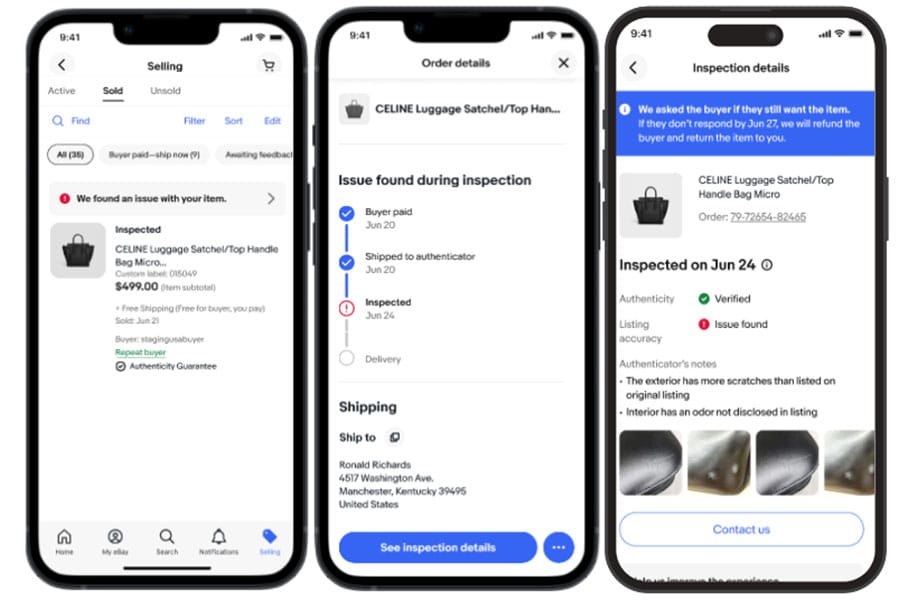
eBay’s Authenticity Guarantee program has fundamentally altered the risk landscape for higher-value watches. For timepieces sold for over $2,000 (and as a paid option for those between $500 and $1,999.99), the watch is first shipped by the seller to a third-party authenticator. This authenticator inspects the watch before forwarding it to the buyer.
However, it is critical to understand the program’s scope and limitations. The guarantee primarily verifies that the watch is not an outright counterfeit. It confirms that the watch is, for example, a genuine Omega. It does not guarantee 100% collector-grade originality. The authenticators will pass a watch with legitimate, manufacturer-made service replacement parts (like a new crown or crystal), which can still diminish its value for a purist collector. Furthermore, the service does not assess mechanical performance, such as timekeeping accuracy or water resistance. Therefore, the Authenticity Guarantee should be viewed as an essential first line of defense against total fraud, not as a substitute for the buyer’s own expert due diligence on condition, originality, and performance.
The existence of these price tiers has effectively created a stratified marketplace. The sub-$500 bracket, with no guarantee available, has become the concentrated “wild west” where the risk of fakes and Frankenwatches is highest, and the buyer is entirely reliant on their own expertise. In the higher, guarantee-protected tiers, the risk of receiving a complete counterfeit is dramatically reduced, but the onus remains on the buyer to be an expert in assessing originality and condition to avoid overpaying for an authentic but heavily restored piece.
Factoring in the Inevitable: The Hidden Cost of Servicing
A cardinal rule for buying vintage watches on eBay is to assume that every watch will require a full service upon arrival. This can cost anywhere from a few hundred to several thousand dollars, depending on the complexity of the movement and the availability of parts. Claims of being “recently serviced” should be met with extreme skepticism unless the seller can provide a detailed receipt from a known, reputable watchmaker. Often, this phrase means the watch was given a quick, amateurish oiling at best. This expected service cost must be factored into the total budget for the watch. A timepiece won for $500 that requires a $400 service is, in reality, a $900 watch.
Bidding Strategy and Resisting “Auction Fever”
The emotional rush of a bidding war, or “auction fever,” is the enemy of a smart purchase. To combat this, a disciplined approach is essential. Based on the market value research and the anticipated service cost, the buyer must determine their absolute maximum price before the auction begins and commit to not exceeding it.
If the excitement and anxiety of a potential purchase begin to build, the “24-Hour Rule” is a powerful tool: sign off from eBay and wait a full day before making any decision. This cooling-off period allows logic to overcome impulse. Patience is the ultimate virtue in watch collecting. There will always be another watch, and a missed opportunity is infinitely better than a bad purchase.
The Omega Conundrum: A World of Redials and References
Vintage Omega watches are immensely popular, which has made them a prime target for a cottage industry of redials and “Frankenwatches”. Successfully buying a vintage Omega on eBay requires a specific set of authentication skills.
- Mastering References and Serials: The key to Omega authentication lies in the numbers. The buyer must know how to find the case reference number (typically engraved on the inside of the case back) and the movement’s serial number and caliber number (engraved on the movement itself). These numbers must be cross-referenced using online databases to confirm that the movement is correct for that specific case model and that the serial number corresponds to the correct production year.
- Obsessive Dial Scrutiny: The Omega logo and the “Seamaster,” “Constellation,” or other model script changed subtly over the decades. The fonts on a prospective purchase must perfectly match the style of the correct era.
- The Crystal’s Secret: Many mid-century Omega models were fitted with acrylic crystals that had a tiny, almost invisible Omega logo etched in the very center. Its presence is a strong indicator of an original crystal, though its absence is not definitive proof of a replacement.
The Rolex Rarity: Why So Few Pass Muster
As the world’s premier luxury watch brand, Rolex is the ultimate target for counterfeiters and modifiers. As a result, the number of truly investment-grade vintage Rolexes available on eBay is vanishingly small.
- The Polish Problem: Unpolished vintage Rolex examples are exceptionally rare and valuable. The vast majority of those found on eBay have been polished repeatedly over the years, with their sharp case lines and valuable chamfers worn down to soft, rounded shapes, significantly diminishing their collector value.
- Engraving Examination: The model reference number and the unique serial number are deeply and sharply engraved between the lugs at the 12 and 6 o’clock positions, respectively. On a genuine Rolex, these engravings have a clean, crisp appearance, often described as a diamond-drag cut. On fakes, the engravings often look shallow, sandy, or acid-etched.
- The Paper Trail of Lies: As previously noted, be exceptionally wary of vintage Rolex listings that include “original papers.” The incentive to fake these documents is enormous, and sellers with a suspiciously high number of “full set” vintage Rolexes are a massive red flag.
Conclusion
Navigating the world of vintage watches on eBay is undoubtedly a daunting task. It is a domain where knowledge is not just power, but a shield against financial loss and deep disappointment. The path is indeed fraught with peril for the unprepared. However, for the collector who is willing to embrace the core tenets of diligence—to research exhaustively, to vet sellers relentlessly, and to exercise unwavering patience—the rewards are immense.
The process outlined in this guide transforms the act of buying from a gamble into a calculated endeavor. It shifts the buyer’s role from that of a passive consumer to an active investigator and a true connoisseur. The thrill is not merely in the potential of finding a bargain, but in the hunt itself: the intellectual satisfaction of mastering a subject, of learning to discern the authentic from the fraudulent, and of developing a trained eye that can spot the subtle tells that others miss.
By following this systematic approach, the collector can confidently navigate the maze, sidestep the traps, and unearth incredible timepieces that are not just objects of value, but tangible pieces of history. The journey of learning becomes as rewarding as the final acquisition, cementing a lifelong passion for the art and craft of horology.Sources used in the report
Related posts
The Rise and Fall of American Watchmaking: A Complete History
American watch manufacturing once dominated global timekeeping, pioneering mass production techniques that revolutionized industry worl...
The Evolution of the Rolex Datejust: 1945-1990
The Rolex Datejust revolutionized wristwatches in 1945 as the world's first self-winding waterproof chronometer with an automatically c...
The Ultimate Guide to Vintage Omega Seamasters
Vintage Omega Seamasters represent one of the most compelling propositions in watch collecting today - offering military provenanc...
The Expert’s Guide to Rolex Serial Numbers and Reference Numbers
Understanding Rolex serial numbers is essential for any Rolex enthusiast, collector, or potential buyer. These unique identif...
The Collector’s Guide to Vintage Wittnauer Chronographs
Vintage Wittnauer chronographs represent one of the most compelling value propositions in the world of mid-century timepieces. While br...
Wittnauer Pert-o-Graph Ref. 7005: An Analog Computer for the Project Manager’s Wrist
Wittnauer Pert-o-graph, tool watch or something else? In the history of horology, the "tool watch" has traditionally been defined by it...
The Expert’s Guide to Buying Vintage Watches on eBay In 2025
eBay, to the aspiring watch collector, is a landscape of profound contradiction. It is a digital bazaar of immense scale, a place where...
Complete Guide to the Rolex Datejust 1601
In the grand pantheon of horology, few timepieces command the same blend of understated elegance, historical significance, and everyday...
How the Quartz Crisis Nearly Ended Swiss Watchmaking
Before the quartz crisis (1970s), the Swiss watchmaking industry stood as an unshakeable colossus, a global symbol of precision, intric...
An Expert’s Guide to Omega Reference Numbers
Omega's rich horological history, stretching back to 1848, has produced an astonishingly diverse and extensive catalogue of timepieces....
Patina vs. Damage on a Watch Dial
Among vintage watch enthusiasts and collectors, one of the most debated topics revolves around patina and damage. What sets the two apa...
How Old Is My Bulova Watch? Production Date Guide
Bulova, one of the first companies to mass-produce wristwatches in the early 20th century, has made it easier than most to identify the...

